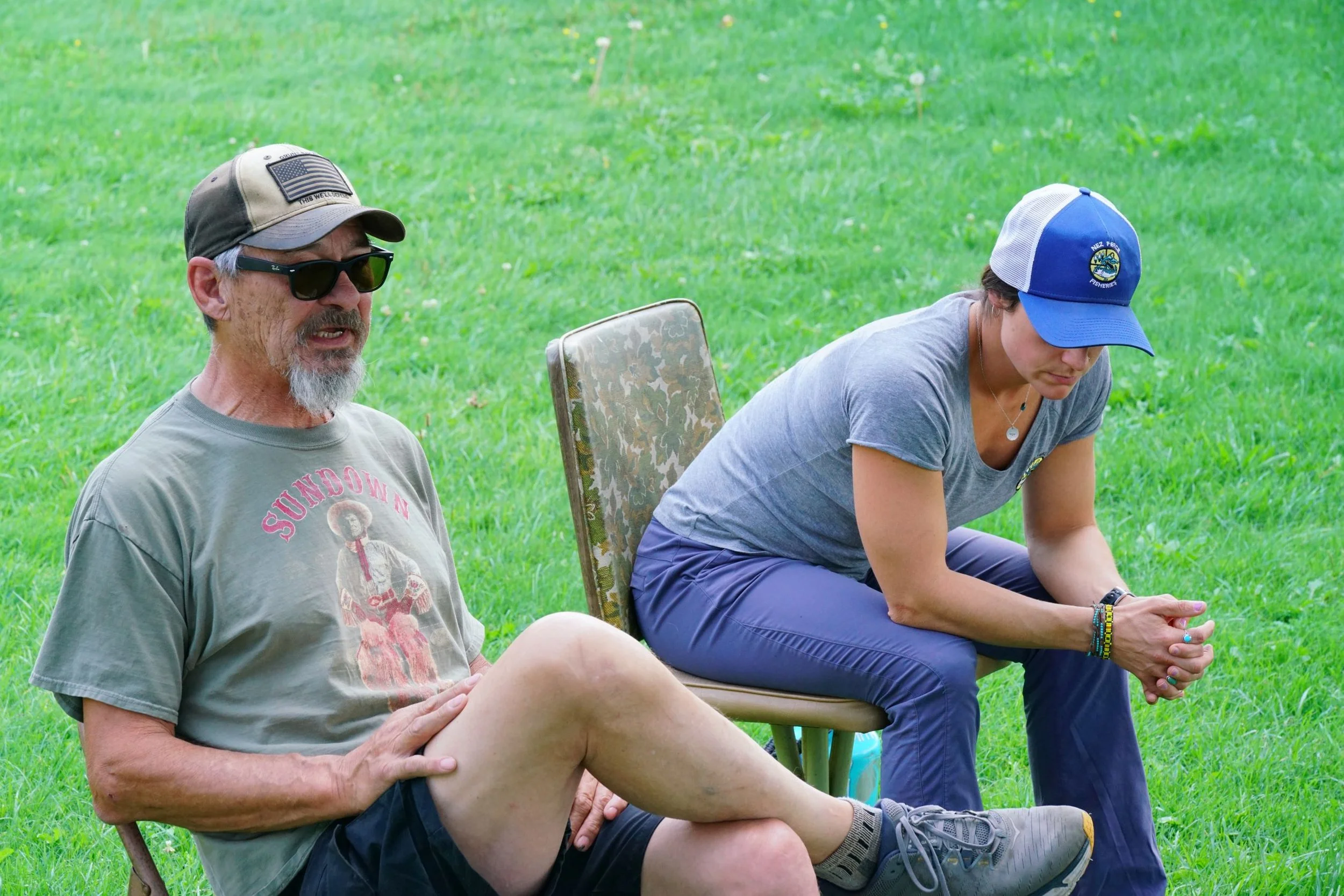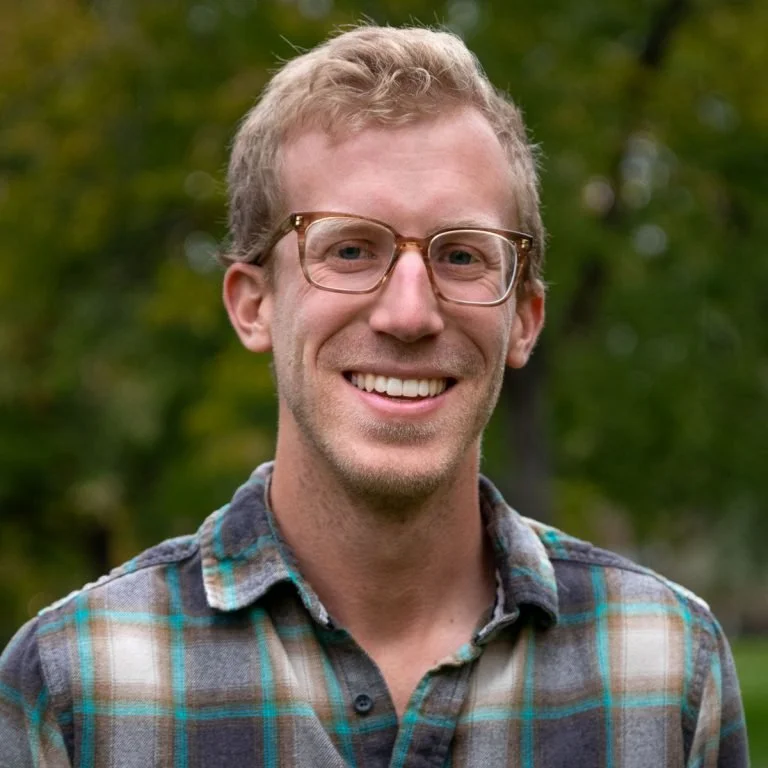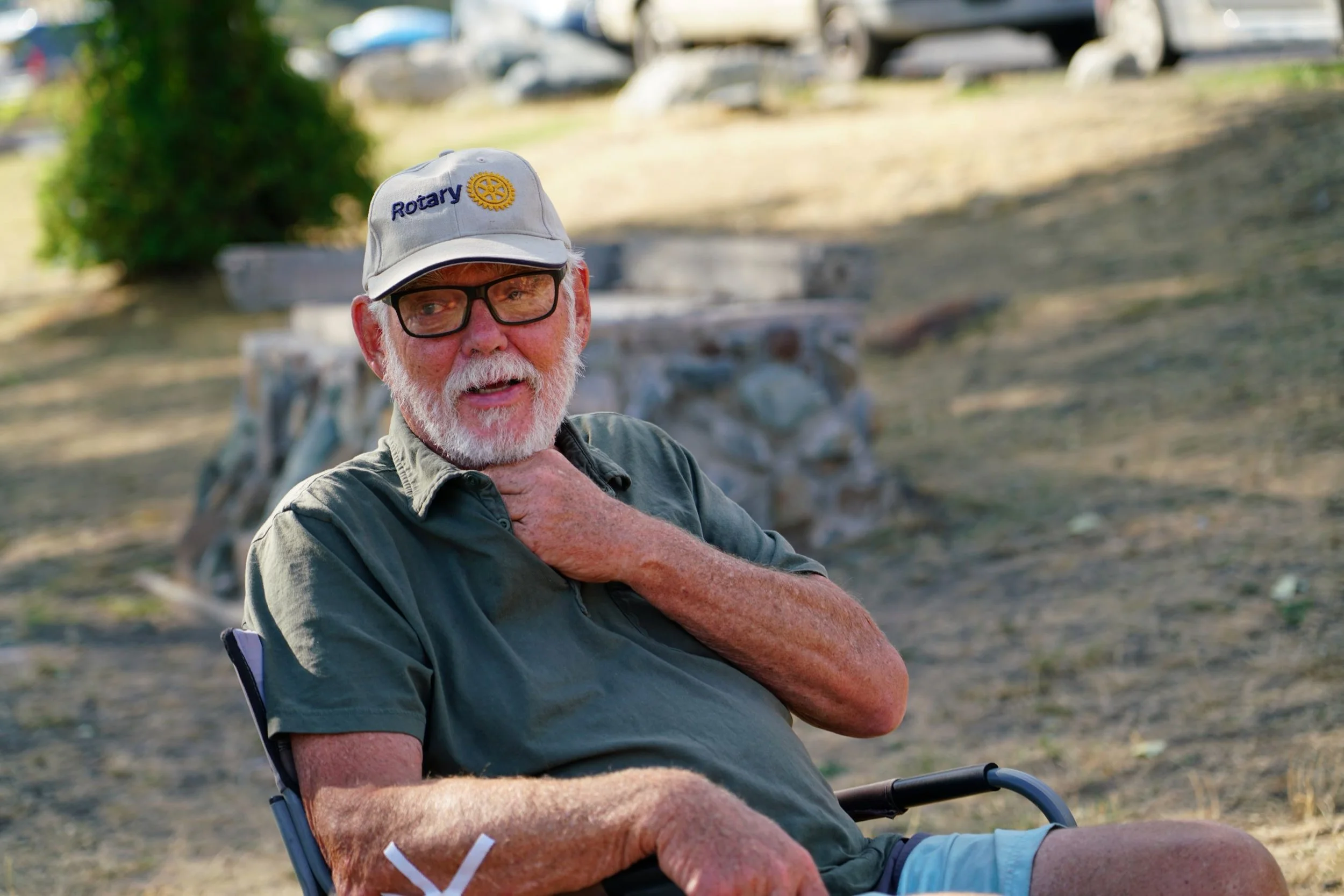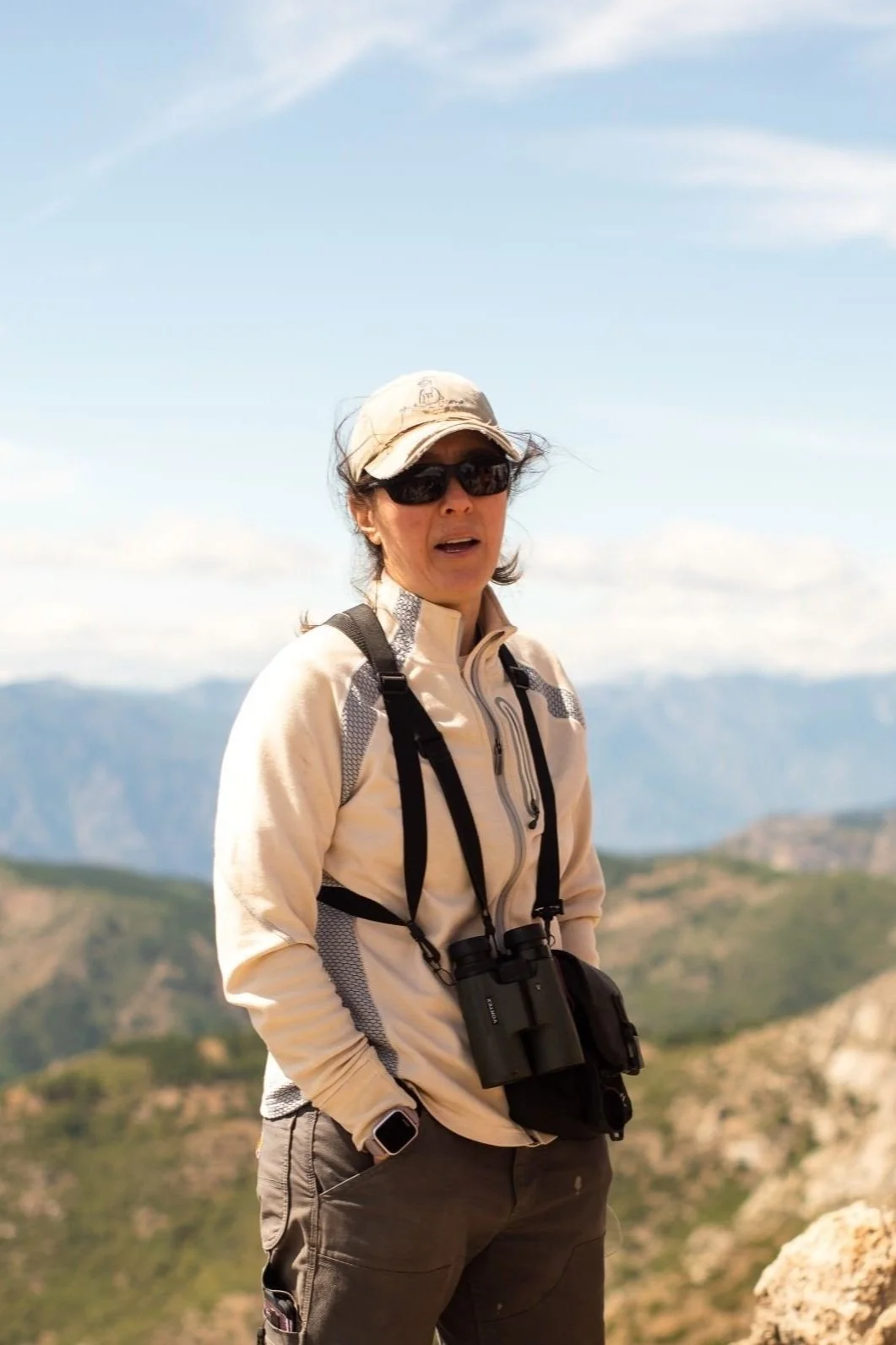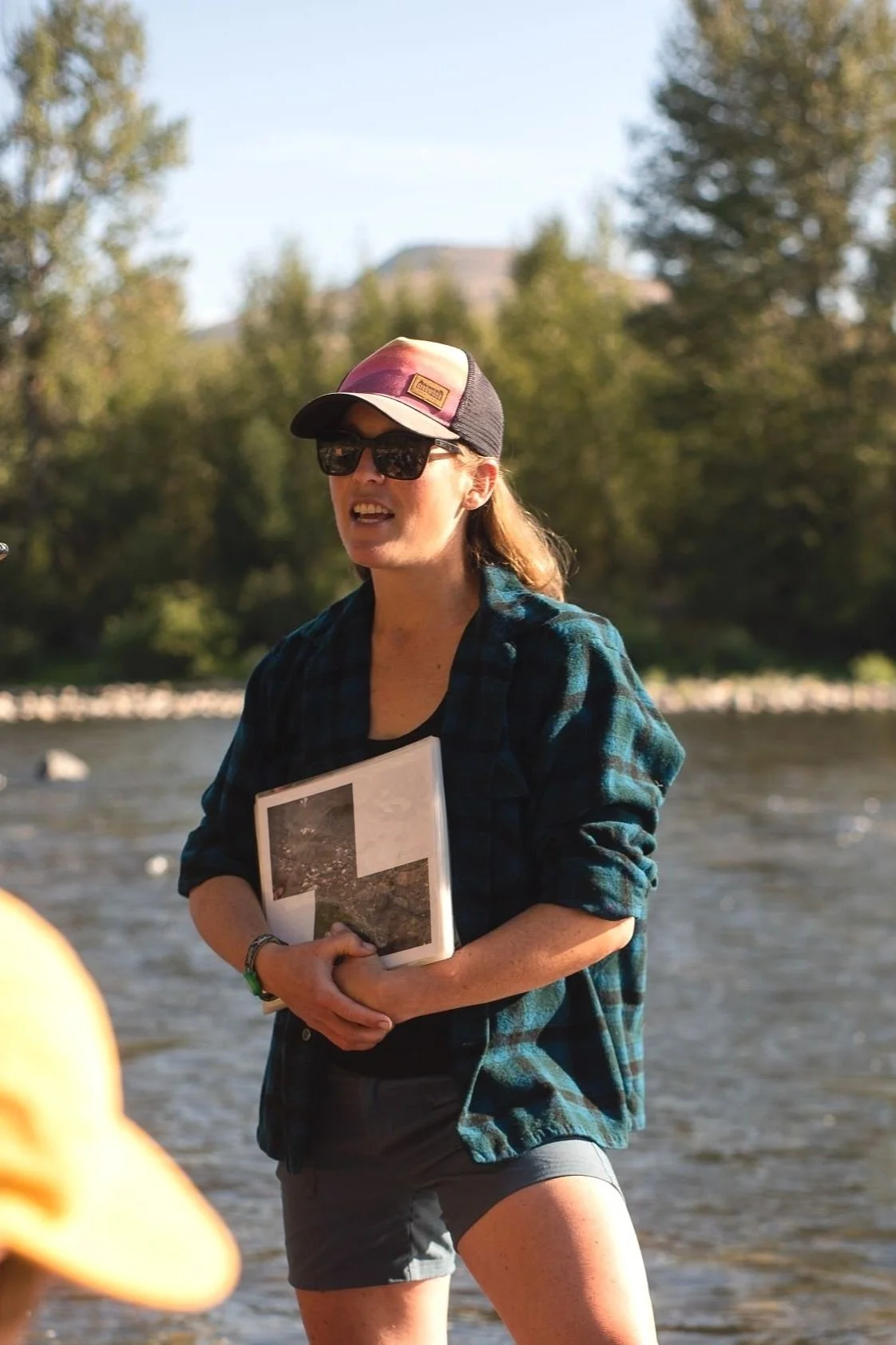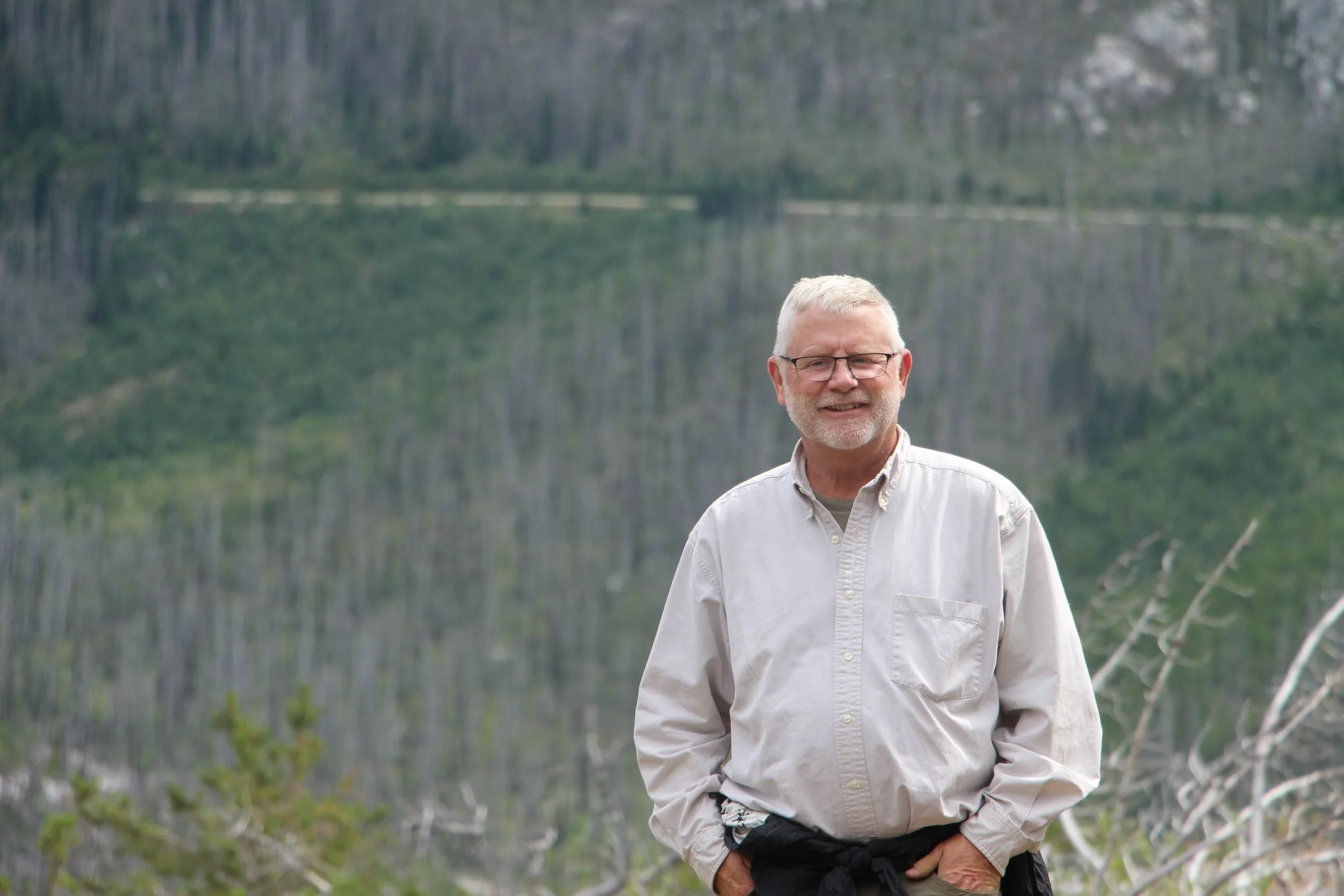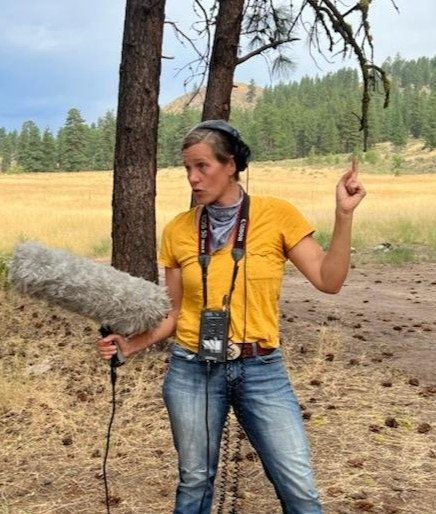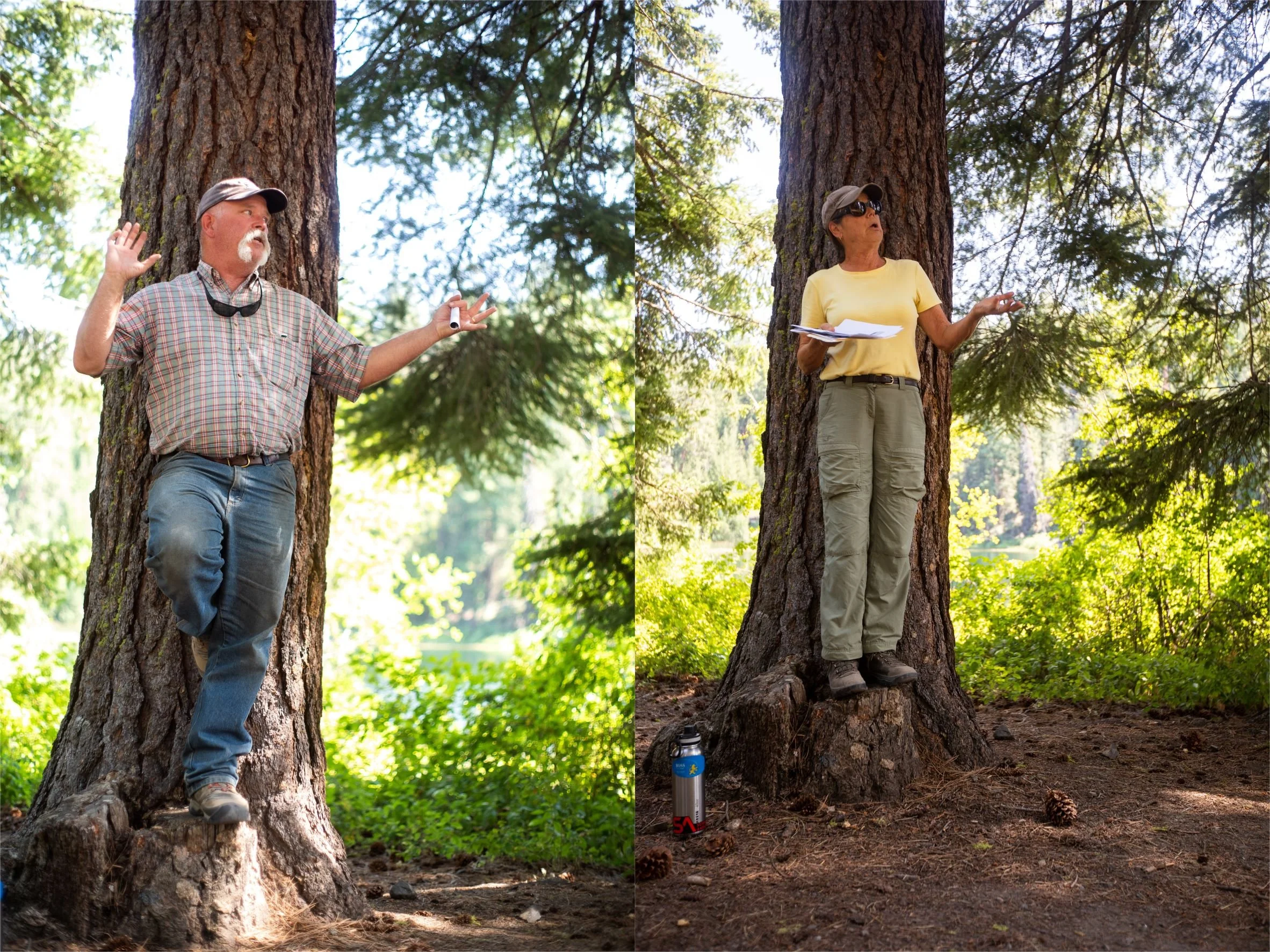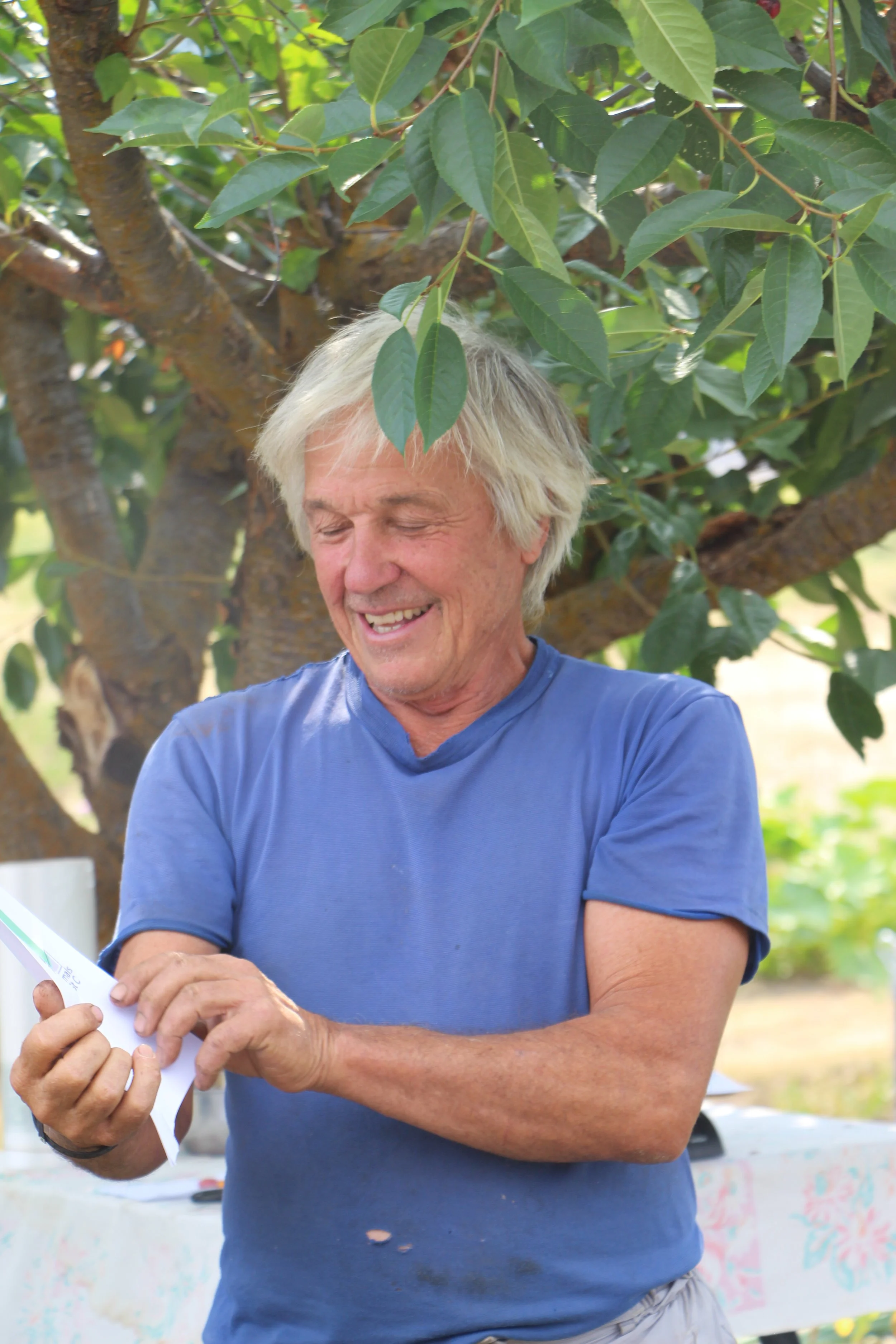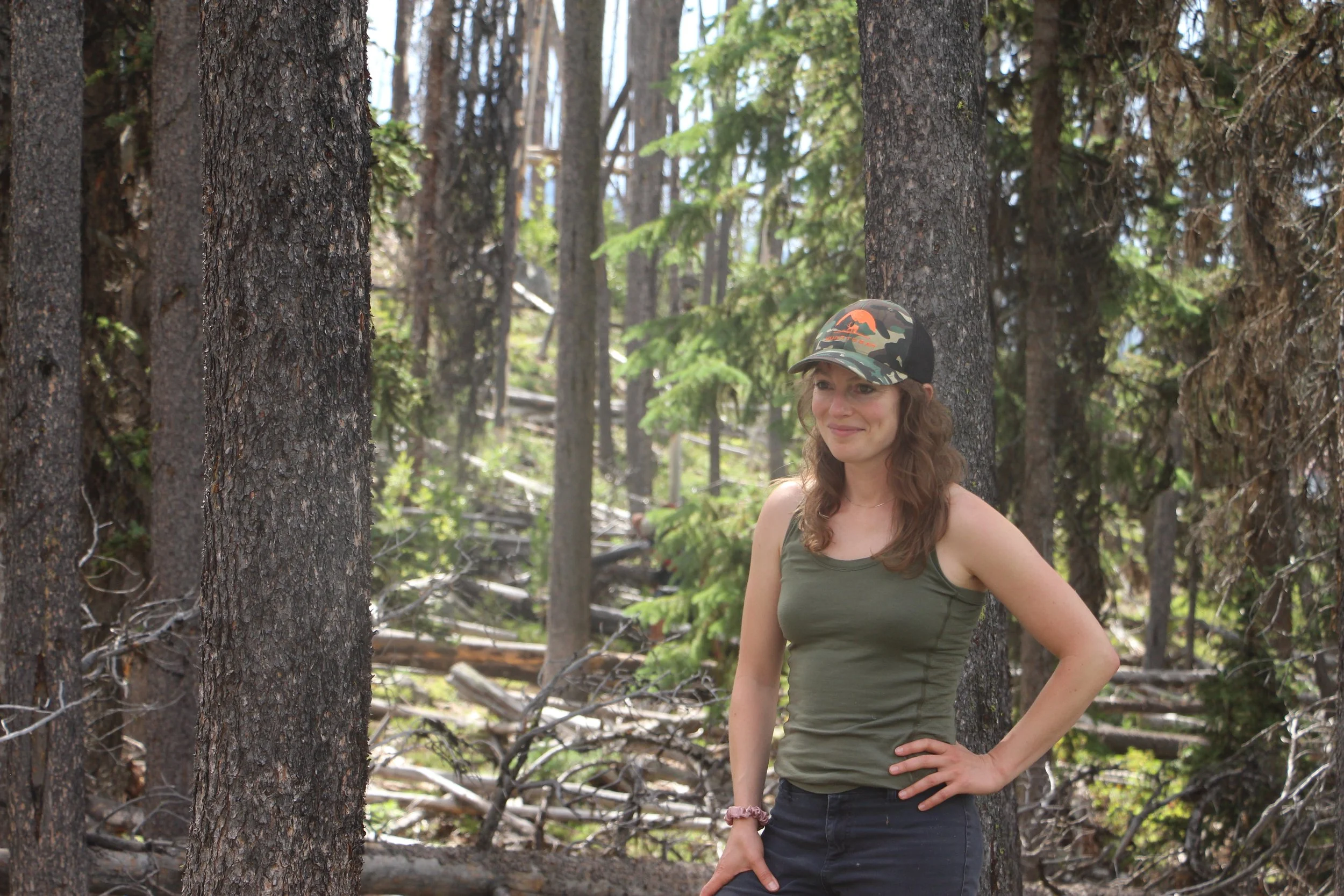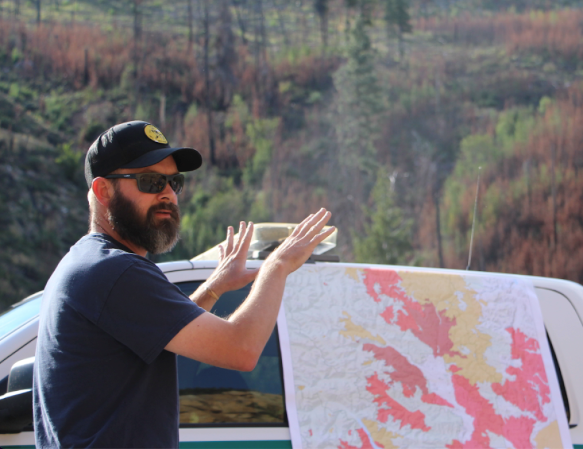Aaron Wanner
Co-Director, White Clouds Preserve
Custer County, ID
9/10 - 9/14
For our convoy’s brief time in Idaho, we are lucky enough to unroll our Paco pads and pitch our trailer in White Clouds Preserve, a name almost as beautiful as the 432 acres of land it signifies. Towering behemoths of red rock (thrilling for the climbers in our ranks) stretch out over a meandering segment of the Salmon river that winds below our campsite. The 1.5 miles of clear, rushing water lay at the physical and ideological heart of the preserve, constituting the central focus of conservationist Aaron Wanner’s restoration efforts on the property.
When we first meet Aaron, I find him to be soft spoken, shifting on his feet and talking to us from behind the chair we set out for him. But as the rising light shifts on the rock wall behind us, he seems to thaw with the cool morning air. Stepping forward, he uses his hands, gesturing at the land around us as his dog, Bruno, weaves around his boots. It becomes clear that behind his quiet tone lies a fierce passion for protecting the preserve and the diverse wildlife it houses.
We pepper him with questions as the sun gets higher, tromping through thick grasses and donning gloves to help weed the grasslands. Slowly we learn of his life, from the suburbs of Sacramento (where, he is sure to tell you, he ‘unfortunately’ grew up) to years of service in the military, back to school and finally to Custer County, Idaho, where he now lives with his wife and daughter on the preserve. He’s full of surprises, in between conversations about native birds and the health of grasses he tells us of his love for geology, jewelry-smithing and Disco Jazz.
Though the bulk of his work consists of rewilding projects like planting and fencing, his face really lights up when we ask him about the community aspect of conservation. He’s adamant that conservationists must work with ranchers, miners and hunters rather than against them, finding ways to live on the land that support human interest and wildlife alike. When asked about finding hope when ecological issues seem insurmountable, he insists that change begins with individuals. We all have passions and strengths. For Aaron, this is where our potential to make positive change lies. “We can make a difference,” He tells us, sweeping his arm out at the fragile land he cares so deeply for, “this is where it starts; in your backyard.”
By Hannah Cuvin


